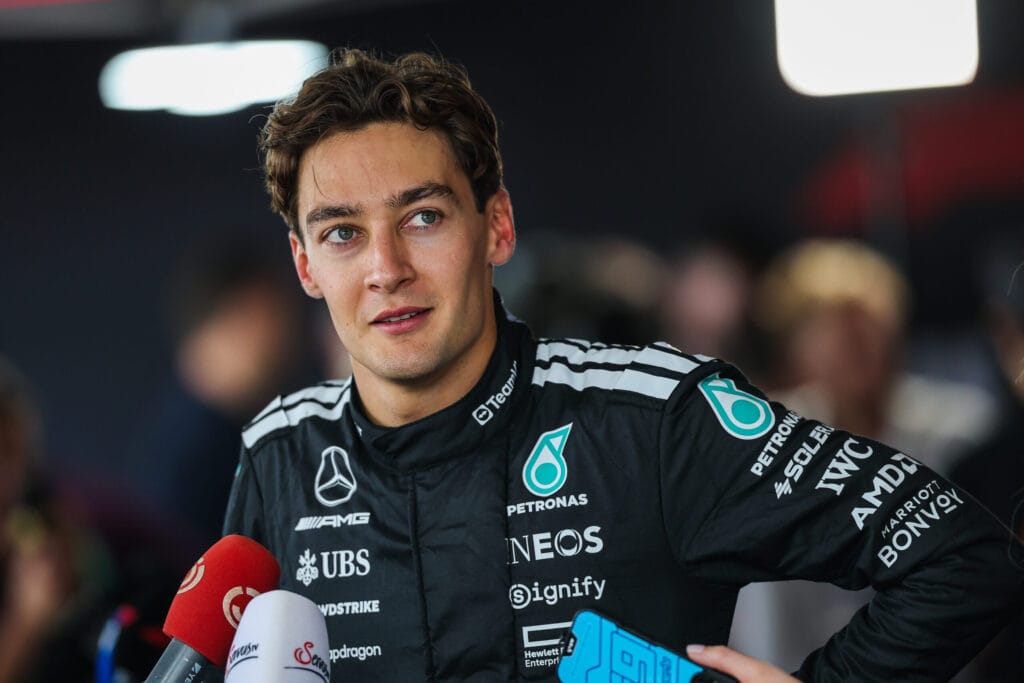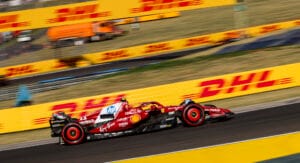During the recent Grand Prix in Hungary, Charles Leclerc failed to capitalize on his first pole position of the season. The Monegasque driver started the race at the Hungaroring well, but suddenly lost pace in the final stint. George Russell, who was able to snatch third place from Leclerc as a result, witnessed the event up close and immediately pointed to tyre pressure as the culprit. However, Gary Anderson, former technical director of Jordan, now rejects this theory.
Since the start of the season, Ferrari has been struggling with the ride height of the SF-25. The persistent problems even led to a disqualification for Lewis Hamilton, when it was discovered after the GP China that the Brit’s skid block had worn down too far. Team boss Frédéric Vasseur later admitted that since the Grand Prix in Shanghai, Ferrari had been forced to maintain a ‘safety margin’ with regard to the car’s ride height to prevent a recurrence.
Ferrari had hoped that the upgrades brought to Spa-Francorchamps, specifically to the rear suspension, would turn the tide. For a moment, the Italian team believed they had succeeded when Charles Leclerc secured Ferrari’s first pole position of the season in Hungary. However, the Monegasque driver lost his pace in the final stint of Sunday’s race. George Russell immediately theorized why his competitor was suddenly so easy to overtake. “The only thing we can think of is that they had the car too low to the ground and had to increase the tire pressure for the last stint,” said the British driver.
Theory Dismissed by Russell
However, Gary Anderson, former technical chief of Jordan, now dismisses Russell’s theory. “What Russell suggests, I find a bit strange and far-fetched,” Anderson begins in The Telegraph. “A team would not reduce its performance in this way just to prevent wear on the plank. There are plenty of other, better, and less drastic solutions. If you increase the rear tire pressure, you are guaranteed to lose performance due to overheating of the rear tires. Doing this on a circuit where traction is absolutely crucial is madness.”
“As we have seen in the past, Ferrari sometimes makes strange decisions, but I do not believe that Russell is onto something here,” the current analyst continues. “These changes are too big of a compromise.”


